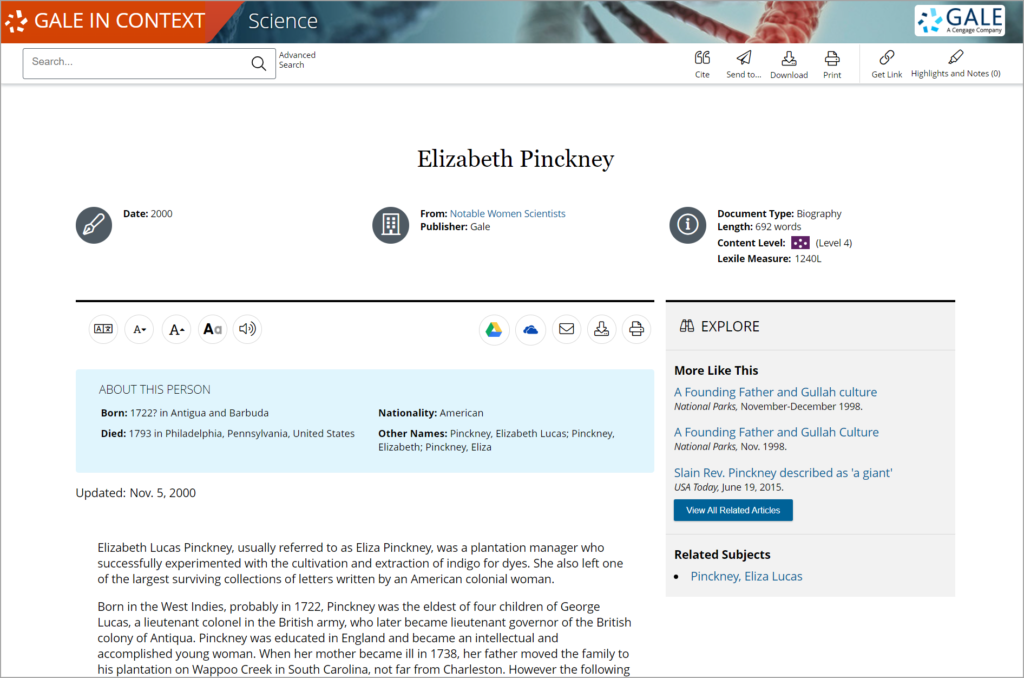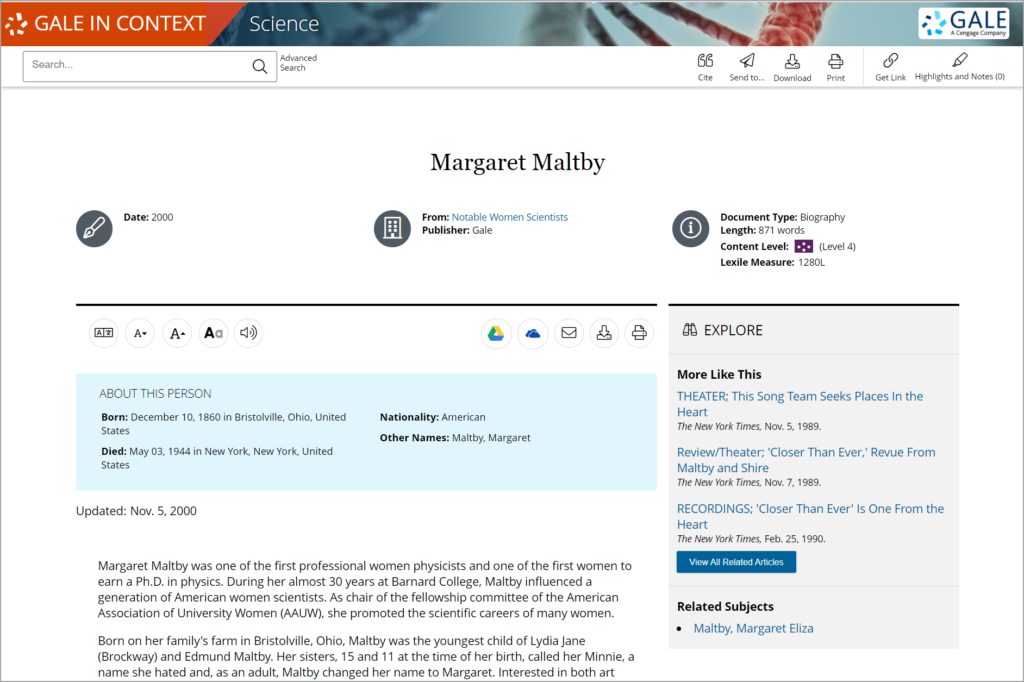| By Carol Brennan |
For Women’s History Month 2022, we’re excited to spotlight some intriguing profiles of trailblazing women over the ages in the fields of science, technology, engineering, and mathematics (STEM). Essays inside Gale In Context: Science offer illuminating details about the lives and achievements of these pioneers who broke through barriers to improve maternal health, generate entire domestic export sectors, and even stop bullets.
Between 1601 and 1609, French obstetrician Louyse Bourgeois (1563–1636) delivered six children in her role as royal midwife to Marie de Medici, the queen of France, bookended by the future King Louis XIII and Henrietta, the woman who ruled as queen of England, Scotland, and Ireland as the bride of the doomed King Charles I. So proficient was Bourgeois in safeguarding women’s health that among her prescriptives is a recipe for making iron lozenges from iron filings to cure anemia.
Eliza Lucas Pinckney (1722–1793) was still a teenager when she began conducting experiments on indigo plants on her family’s South Carolina plantation in the 1730s. Her innovations in the cultivation of this valuable crop used to make blue dye in a burgeoning global textile industry forever altered the economic fortunes of the British colonies in what later became the southern United States.
Canadian cardiologist Maude Abbott (1869–1940) became a leading researcher into congenital heart defects after graduating at the top of her medical school class in Quebec province in 1894. She was posthumously honored by muralist Diego Rivera in his The History of Cardiology masterpiece, commissioned by the National Institute of Cardiology in Mexico City, and is the only woman and sole Canadian depicted in its pantheon of pioneering specialists.
A farmer’s daughter from New Hampshire, Edith A. Roberts (1881–1977) earned her doctorate in botany from the University of Chicago in 1916. Her teaching career and research were carried out at Vassar College, where she created the first outdoor ecological laboratory for plant physiology in the United States.
In 1891, Margaret Maltby (1860–1944) became the first woman to earn a bachelor of science degree from the Massachusetts Institute of Technology. One of the first female physicists in this exciting new field, Maltby focused on the conductive properties of electrolytic solutions and inspired students for three decades as a professor at the single-sex Barnard College in New York City.
Pharmacologist Frances Kelsey (1914–2015) was instrumental in preventing hundreds of thousands of birth defects in the United States in the early 1960s, when she began tracking grievously damaged infants born in countries where the sedative thalidomide had been approved for use by pregnant women. A medical officer with the U.S. Food and Drug Administration (FDA), Kelsey went on to draft a law that required pharmaceutical companies to ensure the efficacy and safety of all new drugs through clinical trials.
A second-generation American, bulletproof-vest inventor Stephanie Kwolek (1923–2014) was a Carnegie Mellon University graduate who spent her career as a chemist with DuPont and specialized in developing new polymers. In 1965, after experiments to create a new type of fireproof fabric, she created Kevlar, a polymer with such astonishing strength and flexibility that it literally stopped bullets.
This brief introduction to some of the thousands of luminaries in Gale In Context: Science is timed for Women’s History Month 2022, but these female scientists’ contributions to the fields of science, technology, engineering, and mathematics are timeless!

About the Author
Carol Brennan has been writing biographical entries for Cengage/Gale since 1993. If she’s not writing, she is either at yoga or walking her dachshund. Carol consumes an alarming volume of podcasts and audiobooks weekly.



